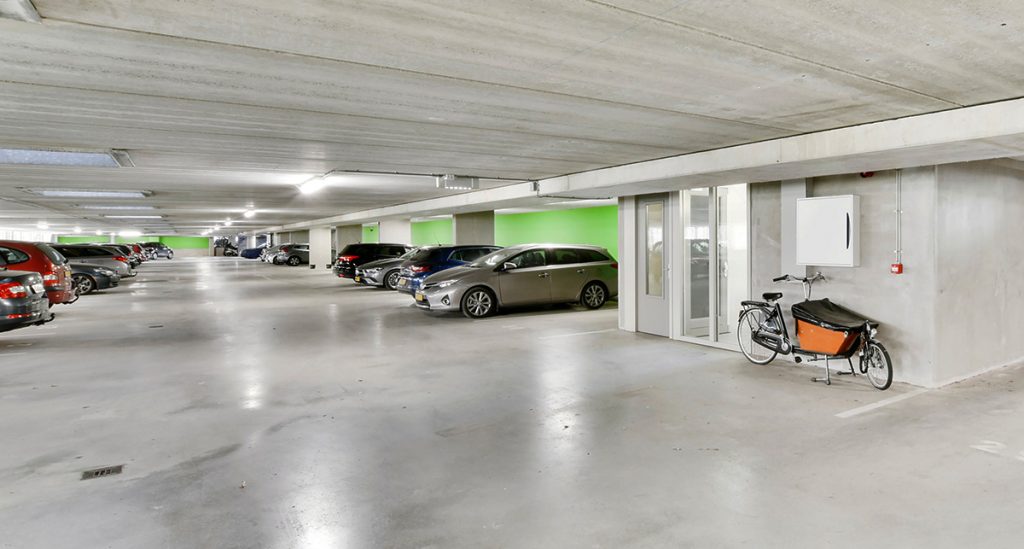
Charging facilities are often a major challenge in multi-party residential complexes.
If you live in a homeowners' association (WEG) and drive an electric car, you naturally want to charge your vehicle at home. However, installing a wallbox is not entirely unbureaucratic.
We explain how you as a condominium owner can apply for a wallbox in your condominium, what you should consider when planning and implementing it and what costs you will incur.
Right to install a wallbox since 2020
Since the German Condominium Modernisation Act (WEMoG) came into force on 1 December 2020, condominium owners have been legally entitled to the installation of a wallbox - provided they have their own parking space. However, this entitlement does not mean that the condominium association dictates the location or the execution of the structural measures. However, the community of owners can co-determine the exact details of the implementation.
Steps to a successful application
To ensure that the application for a wallbox in your WEG is successful, you should consider a few important points:
- Early planning and information
The first step is to inform the other owners and the condominium management at an early stage. Good preparation increases the chance of a quick authorisation. It makes sense to commission a specialist electrical company to check the condition of the electrical installation and draw up a concept for the required infrastructure. This allows you to share the costs of the necessary modernisation of the electricity grid with other co-owners. - Detailed concept and cost estimate
To convince the owners' meeting of your plans, you should present a detailed concept that includes all construction measures and their costs. Presenting several options helps to avoid ambiguity and make the advantages and disadvantages of different variants transparent. This will show that you have thought the situation through and that no unexpected costs will be incurred by the COA. - Observe deadlines and submit applications on time
Owners' meetings usually only take place once a year, so it is important to submit the motion in good time before the meeting. Make sure that the request is received by the administrator at least three weeks before the meeting so that the administrator has sufficient time to review the request and include it in the agenda
Billing of the charging current in the WEG
Billing the charging current in the WEGBilling the charging current is another important aspect that needs to be regulated. There are various models:
- Billing via the flat meter
If the wallbox is connected directly to the flat meter, billing is based on the domestic electricity tariff. - Separate counters
If the wallbox has its own meter, billing takes place directly with the energy supplier, often at a special car or traction current tariff. - Shared use
If the wallbox is used by several owners, an exact allocation of the electricity consumption is required. In this case, it is advisable to use RFID cards to authenticate the users.

The costs for the wallbox and installation can vary depending on the concept and provider. Here are some options:
- Single-user supply line
Each flat owner bears the costs of installing the wallbox and connecting it to the electricity meter. - Central distributor
Centralised cabling that supplies several wallboxes is usually financed by the entire condominium. - Basic installation for all parking spaces
Preparation of the electrical installation at all parking spaces enables subsequent installation of wallboxes. The costs for the basic installation are normally borne by all owners of the condominium. The cost of the wallbox itself varies between 400 and 1,500 euros, depending on the technology and the scope of the device. Further costs are incurred for the installation, which can vary depending on the complexity and provider.
The COA can decide how the costs for the installation are to be distributed. Two models are common:
- Only users pay
The owners who wish to install a wallbox bear the entire costs. If other owners also want a wallbox at a later date, they must contribute to the costs on a pro rata basis. - All owners pay
f a majority of the owners agree, everyone bears the costs, regardless of whether they want to use a wallbox. This requires a two-thirds majority, which also includes at least 50 per cent of the co-ownership shares.
Conclusion: How to successfully install a wallbox in the WEG
The installation of a wallbox in a homeowners' association has been made much easier by the Home Ownership Modernisation Act since 2020.
Nevertheless, the process requires good preparation in order to obtain the consent of the community of owners.
With a well thought-out concept, timely application and clear cost allocation, the installation of a wallbox can be successfully realised. This allows you to charge conveniently and environmentally friendly at home - and create a sustainable charging infrastructure together with other co-owners.
Are you looking for a mobile wallbox for your electric car? The PANTABOX offers you a flexible solution that can be easily integrated into your existing infrastructure.